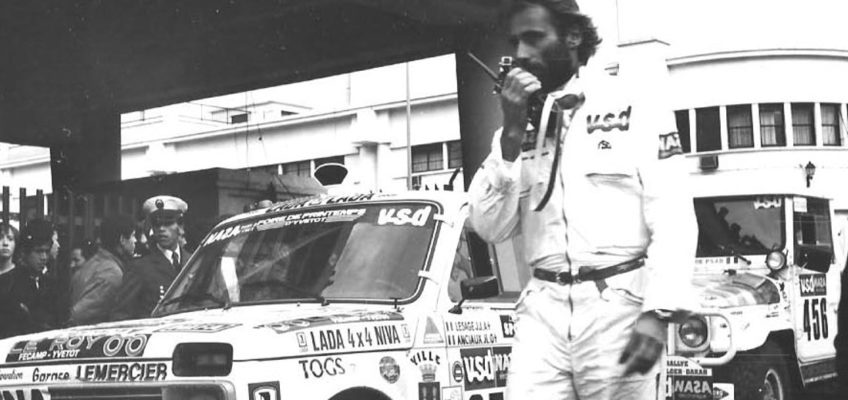Thierry Sabine was born into a bourgeois French family and from a very young age, he displayed a particular fondness for extreme competitions. He took part in some legendary races such as the Rally of Montecarlo (1973) or the 24 Hours of Le Mans (1975, 1976).
His passion for off-road motorcycling racing took him and his Yamaha XT500 to the Abidjan-Niza Rally. This was a very challenging test starting in the south of Cote d’Ivoire and finishing at the Còte d’Azur (Europe).
Sabine took the start unaware that that race would forever change his destiny and that of motorsports. Things started to go wrong at the Dirku-Madama stage where the Frenchman lost his bearings and took the wrong direction.
At that time the only navigation equipment was a map, a compass and the stars and so good orientation skills where key. For three days he was alone without food and with no shade or shelter to protect him from the scorching heat.
Under such strenuous conditions, he had to make use of his most primal survival instincts in order to remain alive. In an act of despair, he decided to draw a big cross on the floor with the help of some stones and that is how he was finally spotted by a plane and rescued.
A miracle or just good luck, the extreme experience seduced and transformed him forever. He had a burning urge to go back to the desert which was already part of who he was. Also, from the time he spent there meditating an idea was born: to create a rally-raid that would emulate the very same challenges that he had experienced.
The project started taking shape during the return trip to France. He would organise a new type of competition where both four and two-wheeled vehicles would have to cross the African continent. Starting in Paris and finishing on the shores of the Lake Retba, in north Dakar, the gruelling, 20-day race would put both the best men and machines to the test.
Now it was just a matter of finding sponsors to finance his dream into reality. Thanks to his perseverance a juice-making firm called Oasis decided to give him financial support.
The legend commences
Astonishingly, only a year after his ordeal at the Teneré desert, the Dakar Rally held its inaugural edition. A total of 182 vehicles, made up of both professionals and amateurs, took the start on the 26th of December 1978 at the Trocadero square in Paris.
Brought together by their passion for speed and adrenaline, that group of men were about to make history. Ahead of them was a 10.000-kilometre adventure across France, Argelia, Niger, Mali, Alto Volta (current Burkina Faso) and finally Senegal.
For almost three weeks, those pioneers would have to face extreme weather conditions and the scarcity of both food and fuel. In the end, on the 14th of January, only 74 participants (less than half), crossed the finish line. The rate of abandonment, rather than discourage new participants, dramatically increased the Rally’s popularity.
The Dakar takes the life of its founder
At the inaugural speech in Trocadero square in 1978, Sabine gave a premonitory speech about the dangers of the race and warned about its possible consequences. Seven years later he would find his death at the Dakar.
It was a fateful 14th of January 1985. The helicopter in which he travelled with another four members of the organisation crashed against a 30-meter dune. They all died on the impact.
Following his wishes, his ashes were spread at the base of a very special tree in the Teneré desert, which he had discovered during a previous edition of the rally with a dear Tuareg friend of his.
At the feet of the tree, the only one in a 400-kilometre radius, a plaque was placed in his memory which reads: “The desert allowed me to live, the desert remembers me”.
Unfortunately, there were many more deaths to come. From its inception, a total of 25 participants have lost their lives during the race and another 15 amongst journalists, spectators and personnel.
Images of ‘Origins of the Dakar Rally’:





Leave a Reply